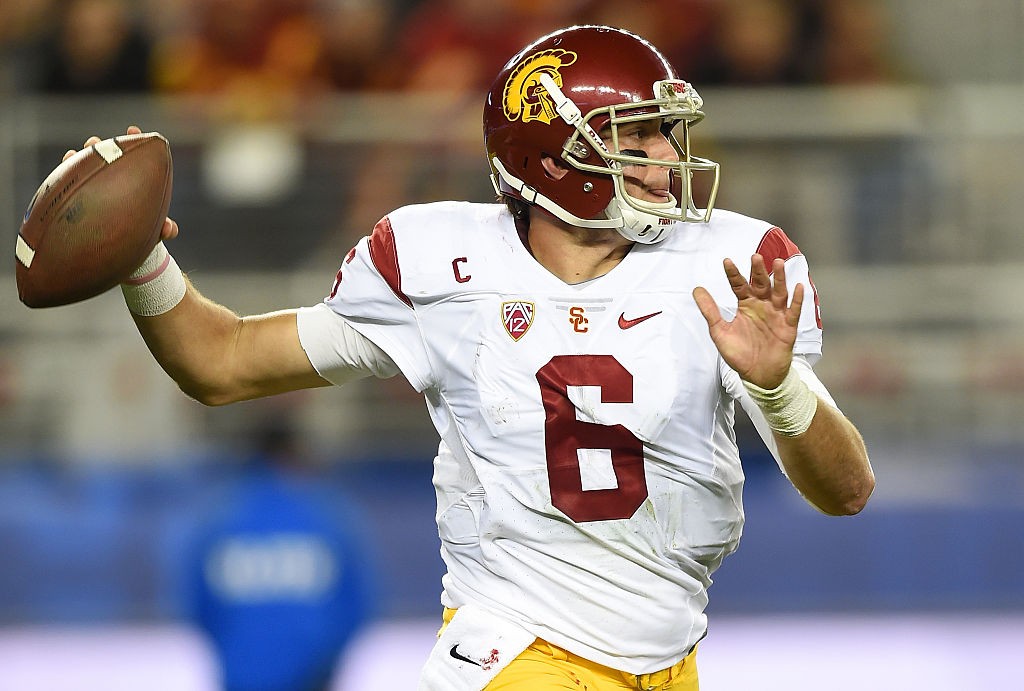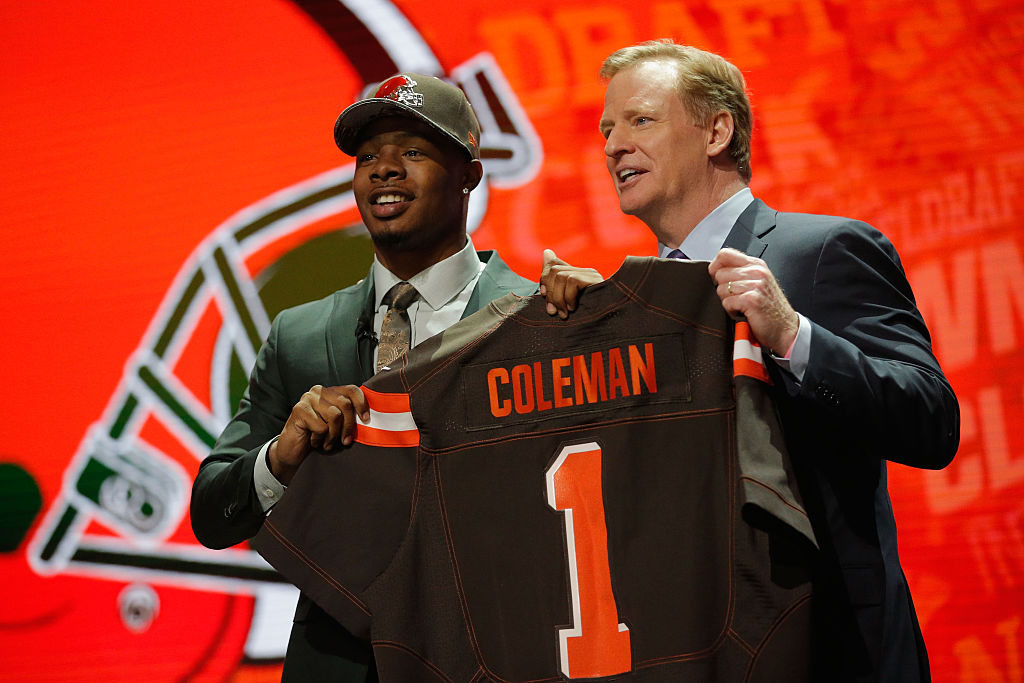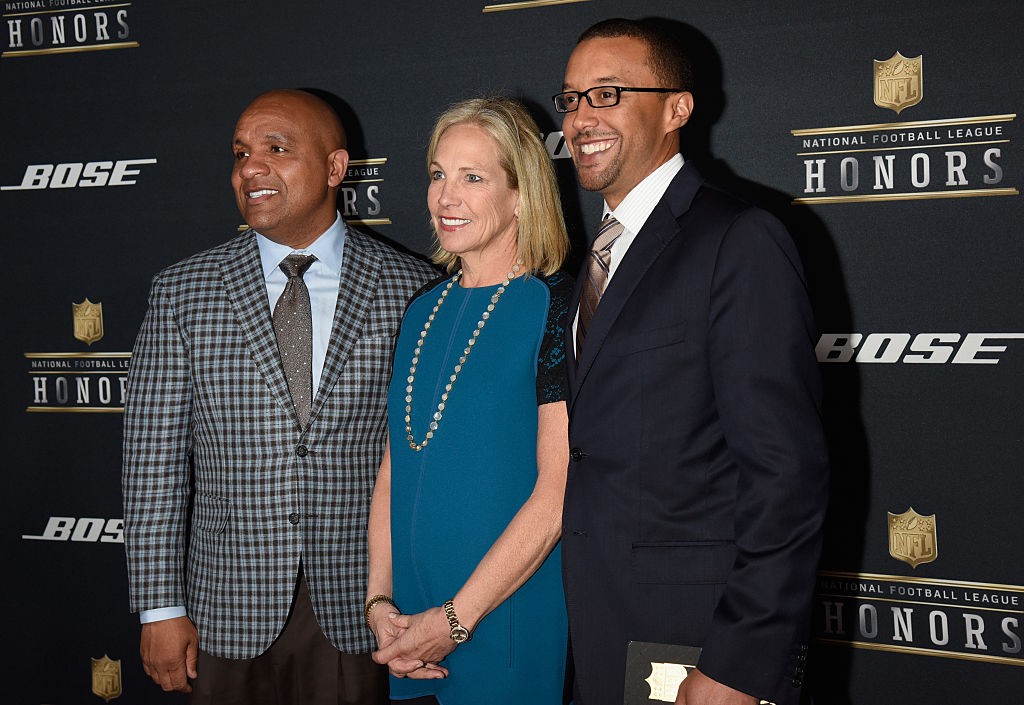The Cleveland Browns have been very, very bad for a very, very long time. This is not a new story. But what is new is what they are trying to do about it.
Since being resurrected in 1999, the Browns have had enough rebuilding projects to have their own series on HGTV. They’ve gone through seven general managers in that timespan including Dwight Clark, Butch Davis, Phil Savage, George Kokinis, Tom Heckert, Michael Lombardi, and Ray Farmer. Who knows, maybe the Property Brothers were in there too at some point. They also had former Super Bowl winning coach Mike Holmgren serve as team president for a while… and, well, let’s just say he didn’t find the same success in Cleveland’s front office.
So when the Browns hired attorney Sashi Brown as their new VP of Football Operations and former Los Angeles Dodgers GM Paul DePodesta as their new “Chief Strategy Officer” to lead their front office, it drew the reaction most would expect – just Cleveland being Cleveland. Maybe Jimmy Haslam got an epiphany from a homeless man that was a big fan of Jonah Hill or something. Maybe Haslam called Kevin Costner and he wasn’t available and he wanted that other guy from that other movie.
And yet, while fans (and apparently others in the NFL) have snickered at the Browns appointing a lawyer and a former baseball guy to lead their latest fixer-upper… there just seems to be something *different* about this latest effort that suggests it could actually be the one that lasts. And it’s about much more than analytics debates and bringing Moneyball to the NFL.
First, DePodesta and Brown hired a coach that actually has some promise in Hue Jackson. His one year of head coaching experience in Oakland showed he can provide hope to a moribund franchise and his work in Cincinnati with Andy Dalton and the Bengals offense has built them into perennial contenders.
The new regime in Cleveland has also shown something previous ones have not – a long term vision and plan. It’s hard to have one of those when you’re hiring a new head coach every 2.1 seasons and a new general manager every 2.4 seasons. It’s like trying to successfully flip a home when all you’ve done is remodel a bathroom. (People love their open concepts these days don’t you know.)
And to that point, the Browns are already showing that long-term vision in the moves they made in the lead-up to this year’s NFL Draft.
Much was made about their decisions to trade down twice – first from No. 2 to No. 8 and then from No. 8 to No. 15 – in order to accumulate more picks. Brown said in his press conference after the first trade that acquiring those picks and “draft capital” was one of the objectives of the new front office:
“We are committed to our plan and articulated strategy is the main thing, which is to find a nucleus of young players. We do believe in building through the draft so whenever we have an opportunity to have very valuable draft capital, not only a lot but very valuable draft capital in an extra one and an extra two in the next three years, so for the next three years we are going to have at a minimum of three picks over the first two rounds. We like that positioning. As I said, we have a plan. We are going to stick to it. We are confident it will produce results.”
Brown and DePodesta are taking that idea of draft capital farther than anyone has before (at least in the NFL) and did so in a flurry of draft weekend trades that probably required a full baseball scorecard to keep track. As long as they don’t use the word “Process” then everyone can stay cool.
A full list of the Browns trades involving draft picks (we think):
– Trading Pick #2 and a 2017 4th round pick to Philadelphia for Pick #8, a 3rd round pick (#77), 4th round pick (#100), a 2017 1st round pick, and a 2018 2nd round pick.
– Trading Pick #8 and a 6th round pick (#176) to Tennessee for Pick #15 and a 3rd round pick (#76), and a 2017 2nd round pick.
– Trading a 3rd (#77) and 5th round pick (#141) to Carolina for a 3rd round pick (#93), 4th round pick (#129), and 5th round pick (#168).
– Trading a 4th round pick (#100) to Oakland for a 4th round pick (#114) and 5th round pick (#154).
– Trading a 7th round pick (#223) to Miami for their 7th round pick (#250) and CB Jamar Taylor.
When the dust finally settled, the Browns had selected 14 players in the 2016 draft – tied for the most picks with the 1997 Miami Dolphins since the draft moved to seven rounds in 1994. That class produced Sam Madison and Jason Taylor.
Even more important than the gluttony of 2016 picks though was what Cleveland did to set the scene for 2017 and 2018. The Browns are now stocked with two 2017 1st rounders and two 2nd rounders AND two 2018 2nd rounders. Now that is a strategy that will differentiate you from everyone else because rarely will NFL teams trade draft picks more than one year in advance.
The Browns aren’t just building through the draft – they’re building through multiple drafts. This means that the work of this front office won’t actually be finished until the 2018 draft (and assuming they keep this going, a couple more drafts after that). And in turn, hopefully this means that Brown and DePodesta will actually get the chance to see their plan play out in full, to see whether or not the grand plan of the NFL version of Moneyball can actually work. A novel concept, isn’t it? And one that won’t be defined by whatever grade Mel Kiper Jr. gives the franchise today on their 2016 draft.

It’s a great strategy for a few reasons – 1) it’s completely different than anything we’ve seen from the Browns before, 2) it’s not like Cleveland is a great free agent destination so building through the draft is your best option, and 3) the more draft picks you have, the better the odds that one of them may somehow possibly succeed. Hurrah for science, woo!
And certainly, the odds are that most of these Browns picks won’t turn into Pro Bowlers. But if Cleveland can just hit on a couple of these 14 draftees, it will bring more positivity to the Browns franchise than any draft class has in a long, long time. The Browns have one, count it, one Pro Bowl appearance from their last five draft classes in Jordan Cameron. Since 1999, Joe Thomas is their only first-team All-Pro selection as a draftee.
To put the Browns new Harvard-based philosophy in simpler terms – if you throw enough draft picks at the wall, one of them is bound to stick.
As far as the specifics of the 2016 class, Hue Jackson is staking a lot of his reputation on hand-selecting USC’s Cody Kessler as his quarterback of choice from this year’s draft class, passing up the chance to draft Carson Wentz and taking him over the likes of Connor Cook and Cardale Jones. What did Jackson point to – stats like Kessler’s superior completion percentage and touchdown to interception ratio.
Cleveland also did something revolutionary and actually drafted a wide receiver – actually, they drafted four of them. After years of ignoring the position, Browns fans might have been happy with 14 of them. And again, it’s the power of overwhelming numbers and draft capital that is the guiding force. You might fail at drafting one wide receiver, maybe even two, perhaps you could strike out at drafting three. But to miss on all four? Even for the Browns that’d be quite the achievement. (Insert joke about the Browns missing on 8,721 quarterbacks in the last 20 years here.)
Truth be told, it’s all guesswork at this stage how this plays out in the long-term so early in the process. Maybe this latest rebuild will fail spectacularly. Maybe the Browns will win four Super Bowls and Kessler becomes the next Tom Brady. (That sounds ridiculous, but I could have said RGIII…) Maybe, just maybe, they’ll climb back to respectability. Regardless of how it works out, the Browns at least deserve credit for trying something new; for attempting something different in a conservative, copycat league.
Bring on the hoarding of draft picks, bring on the Moneyball, bring on the analytics. And may the odds be ever in Cleveland’s favor.








